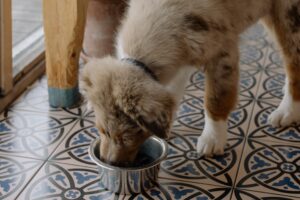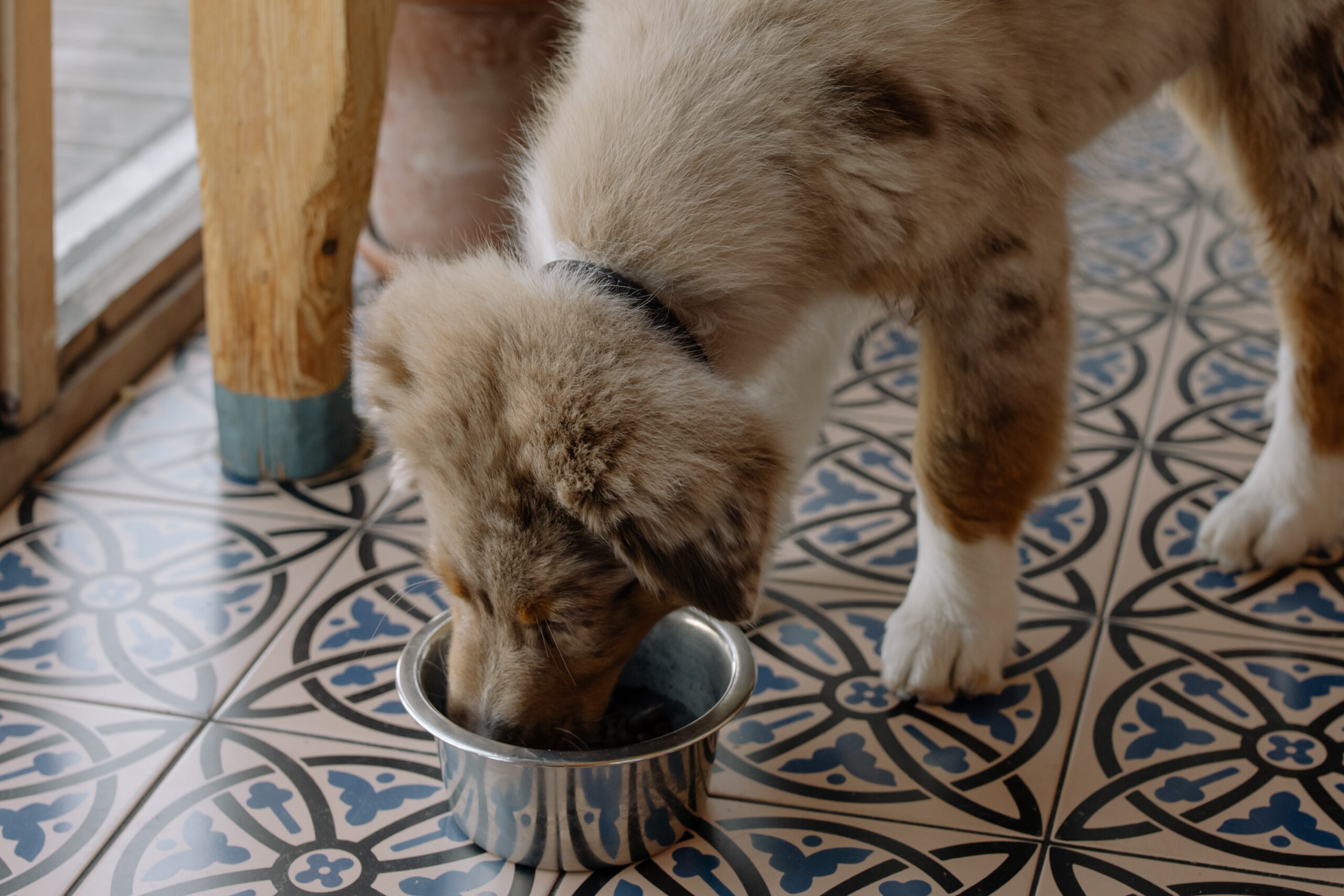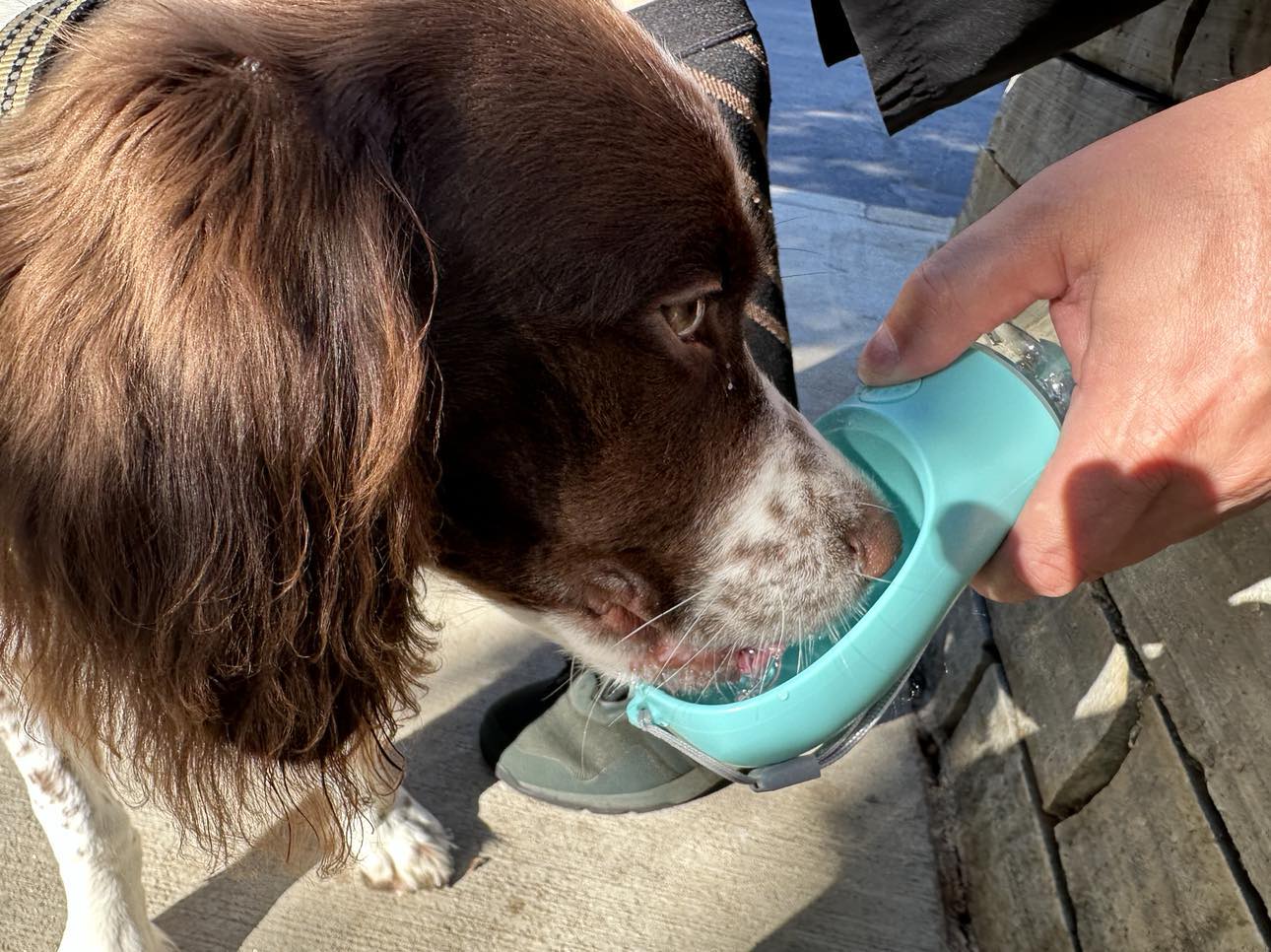Welcoming a new puppy into your home is an exciting and joyous experience, but it also comes with the responsibility of proper training, including potty training. Litter box training for puppies is a valuable and effective method that offers numerous advantages over traditional outdoor training methods. In this article, we will explore the importance of litter box training and the benefits it provides for both puppies and their owners.
The Importance of Litter Box Training for Puppies
Litter box training is a vital aspect of a puppy’s early education. By teaching your puppy to use a designated area for elimination, you instill good habits from the start and lay the foundation for a well-behaved adult dog. Litter box training not only facilitates a cleaner living environment but also fosters a strong bond between you and your furry companion.
One of the primary reasons litter box training is crucial is that it allows puppies to relieve themselves conveniently, especially in situations where outdoor potty breaks may not be readily available, such as during extreme weather conditions or in apartments without immediate access to outdoor areas. Additionally, it can be beneficial for families living in urban areas or individuals with limited mobility, as it provides a practical and accessible solution for potty training.
Benefits of Using a Litter Box Over Traditional Outdoor Training Methods
- Convenience: A litter box offers unparalleled convenience for both the puppy and the owner. It provides a designated and easily accessible spot for the puppy to eliminate, minimizing the need for frequent trips outside.
- Consistency: Litter box training allows for consistent potty breaks, regardless of external factors like weather or time constraints. This consistency helps reinforce good potty habits and aids in quicker training progress.
- Indoor Living: For puppy owners residing in apartments or homes without easy access to outdoor spaces, a litter box provides a practical and hygienic alternative to outdoor potty training.
- Early Start: Puppies have limited bladder control, and their tiny bladders fill up quickly. Litter box training allows for timely and immediate relief, reducing the likelihood of accidents indoors.
- Bonding and Trust: The process of litter box training involves positive reinforcement and encouragement from the owner. This fosters a sense of trust between the puppy and the owner, strengthening their bond and overall relationship.
By adopting litter box training for your puppy, you not only ensure their comfort and well-being but also enjoy the convenience and flexibility that this method offers. As we delve further into the process of litter box training, you’ll discover effective techniques and helpful tips to make the journey smoother for both you and your beloved puppy.
Basics of Litter Box Training
Litter box training for puppies involves teaching them to use a designated indoor spot, typically a small container filled with a specific type of litter, for their potty needs. This concept draws inspiration from litter box training used for cats and adapts it to suit the needs of puppies, especially in situations where outdoor potty training may be challenging due to various reasons, such as living in an apartment or during extreme weather conditions.
The goal of litter box training is to create a convenient and hygienic potty solution for puppies, allowing them to relieve themselves indoors in a designated area, while still reinforcing the idea that potty time is a specific activity in a designated spot.
Suitable Age to Begin the Training Process
The ideal age to begin litter box training for puppies is around 3 to 4 weeks old. At this age, puppies have developed enough mobility and control over their bodily functions to begin associating the concept of a specific potty area. Younger puppies may not have the ability to control their elimination needs, while waiting too long to start the training may lead to the development of habits that are harder to change.
Starting early also helps ensure that puppies become familiar with the litter box before they become strong enough to roam freely, reducing the likelihood of them developing the habit of eliminating in inappropriate places.
Choosing the Right Litter Box and Litter
When it comes to litter box options for puppies, several choices are available to cater to their specific needs. Some common types of litter boxes include:
- Standard Litter Box: This is the most common type and is suitable for most puppies. It is a rectangular or square-shaped box with low sides for easy access.
- High-Sided Litter Box: This type of litter box has higher sides, which can be helpful for puppies that tend to kick or scatter litter outside the box.
- Corner Litter Box: Designed to fit into corners, these litter boxes save space and provide a discreet location for the puppy to do their business.
- Covered Litter Box: These have a lid or hood that provides privacy for the puppy. Some puppies may prefer the extra seclusion, while others may feel more comfortable with an open design.
The Importance of Selecting an Appropriate Size and Design
When choosing a litter box for your puppy, size and design play a crucial role in their comfort and successful training. A litter box that is too small may discourage the puppy from using it, while one that is too large might make them hesitant to step inside.
Ideally, the litter box should be large enough for the puppy to turn around comfortably and dig without feeling cramped. It should also have low sides to allow easy entry and exit, especially for younger or smaller puppies.
The litter box’s design should be sturdy and stable to prevent tipping and messes. Additionally, consider the material and texture of the litter box, as some puppies may prefer a smooth surface, while others may feel more secure with a non-slip bottom.
Compare Various Litter Options and Their Pros and Cons
When it comes to choosing litter for the puppy’s litter box, several options are available, each with its pros and cons. Some common litter choices include:
- Paper-Based Litter: Made from recycled paper, this litter is environmentally friendly and safe for puppies to ingest accidentally. However, it may require more frequent changes due to its absorbency.
- Pine Pellet Litter: Composed of compressed pine, this litter has a natural pine scent and is generally low-dust. However, it may not clump like traditional clay litter.
- Clay Clumping Litter: This traditional litter type forms clumps when wet, making it easy to scoop and maintain cleanliness. However, some puppies may be sensitive to the dust or fragrance found in certain clay litters.
- Silica Gel Crystal Litter: These absorbent crystals are excellent at controlling odors and can last longer than other litters. However, some puppies may find the texture uncomfortable.
The best litter option for your puppy depends on their preferences and any specific sensitivities they may have. Experimenting with different litters can help you determine the most suitable one for your furry friend’s litter box training journey.
Setting Up the Litter Box Area
Select a Suitable Location for the Litter Box
Choosing the right location for your puppy’s litter box is crucial for successful training. It should be a quiet and low-traffic area, providing the puppy with a sense of privacy and security during potty time. Avoid placing the litter box near their sleeping or eating areas, as puppies generally prefer to keep these spaces separate.
Additionally, consider the accessibility of the location. The litter box should be easily accessible for the puppy to find without confusion or struggle. Placing it near the exit door can help puppies associate the litter box with the designated potty area.
Create a Designated Space for the Puppy’s Litter Box
Designate a specific area in your home for the puppy’s litter box. This helps them understand where they should go when nature calls and encourages consistency in their potty habits. Use a baby gate or barrier if necessary to limit access to the litter box area and prevent accidents in other parts of the house.
Ensure the space is well-ventilated and has enough room for the litter box and the puppy to move comfortably. If you have multiple puppies or pets, consider providing separate litter box areas for each to avoid potential territorial issues.
Keep the Area Clean and Odor-Free
Maintaining a clean and odor-free litter box area is essential for the puppy’s comfort and continued use of the designated spot. Scoop the litter box daily to remove waste and clumps, and replace the litter entirely as needed. Puppies have sensitive noses, and a dirty litter box can discourage them from using it.
Using an appropriate litter deodorizer or baking soda can help neutralize odors and keep the area smelling fresh. Be cautious about using harsh chemicals or strong-smelling cleaners near the litter box, as they may deter the puppy from using it.
Regularly clean the litter box and surrounding area with pet-safe disinfectants to ensure a hygienic environment. This not only promotes good potty habits but also prevents the spread of germs and bacteria.
By carefully selecting a suitable location, creating a designated space, and maintaining cleanliness, you can set up a comfortable and effective litter box area for your puppy’s potty training. Remember, consistency and patience are key throughout the litter box training process, and with time and positive reinforcement, your furry friend will master their potty skills and become a well-trained member of your family.
The Litter Box Training Process
Introduce the Puppy to the Litter Box
Introducing the litter box to your puppy is a crucial first step in the training process. Start by placing the litter box in the designated area and allowing the puppy to explore it at their own pace. Let them sniff and investigate the box to familiarize themselves with it.
To pique their interest, you can place a small amount of soiled paper or a piece of puppy pad inside the litter box. The scent will attract the puppy and reinforce the idea that the litter box is for elimination.
Encourage the Puppy to Use the Litter Box through Positive Reinforcement
Positive reinforcement is an effective method to encourage the puppy to use the litter box consistently. When you notice the puppy showing signs that they need to go, gently guide them to the litter box. Praise and reward them immediately when they use it correctly.
Offer verbal praise with a cheerful tone and give them small treats as positive reinforcement. The use of rewards creates a positive association with the litter box, motivating the puppy to repeat the behavior.
Dealing with Accidents and How to Respond Appropriately
Accidents are a normal part of the litter box training process, especially in the beginning. If your puppy has an accident outside the litter box, avoid punishment, as it can create fear and anxiety. Instead, clean up the mess promptly and thoroughly to remove any lingering odor that might attract the puppy to the same spot again.
Stay vigilant and observe your puppy’s behavior closely. If you notice signs that they need to go, such as sniffing, circling, or whining, gently redirect them to the litter box. Reinforce good behavior with positive reinforcement whenever the puppy uses the litter box appropriately.
Establish a Consistent Schedule for Potty Breaks and Litter Box Usage
Consistency is key in litter box training. Establish a regular schedule for potty breaks and litter box usage, especially during the early stages of training. Take your puppy to the litter box after meals, playtime, waking up, and before bedtime.
Keep track of your puppy’s potty habits to anticipate their needs and prevent accidents. Gradually, as your puppy becomes more accustomed to using the litter box, you can adjust the schedule based on their behavior.
The litter box training process requires patience, consistency, and positive reinforcement. By introducing the litter box to your puppy, encouraging them through praise and rewards, handling accidents with understanding, and establishing a consistent schedule for potty breaks, you can successfully teach your furry companion to use the litter box consistently. Remember that each puppy learns at their own pace, so be patient and celebrate each milestone as your puppy progresses in their litter box training journey.
Troubleshooting and Common Challenges
Common Issues and Challenges during Litter Box Training
Litter box training may not always go smoothly, and certain challenges may arise during the process. Here are some common issues and ways to address them:
- Accidents Outside the Litter Box: If your puppy consistently has accidents outside the litter box, review your training techniques and ensure that the litter box is in a convenient and accessible location. Consider confining the puppy to a smaller area when unsupervised to minimize accidents.
- Fear or Avoidance of the Litter Box: Some puppies may be initially fearful or hesitant to use the litter box. Gradually introduce them to the box, and use positive reinforcement to create a positive association. Avoid forcing the puppy into the litter box, as it may increase their fear.
- Litter Box Aversion: If your puppy develops an aversion to the litter box, evaluate the type of litter you’re using. Puppies may dislike certain textures or scents. Experiment with different litter options to find the one that your puppy prefers.
Tips for Dealing with Resistance or Reluctance from the Puppy
Dealing with resistance or reluctance from your puppy during litter box training requires patience and understanding. Here are some tips to help overcome these challenges:
- Positive Reinforcement: Continue to use positive reinforcement to encourage your puppy to use the litter box. Praise and reward them each time they use it correctly, reinforcing the desired behavior.
- Consistency: Stick to a consistent training schedule and take your puppy to the litter box at regular intervals. Consistency helps your puppy establish a routine and reinforces good habits.
- Observe and Respond: Pay close attention to your puppy’s behavior and signals. If they seem reluctant or anxious about using the litter box, gently redirect them and offer reassurance.
Potential Behavioral Issues Related to Litter Box Training
In some cases, behavioral issues may arise during litter box training. Here are some tips for handling potential problems:
- Separation Anxiety: Some puppies may experience separation anxiety, leading to accidents when left alone. Gradually increase the time they spend alone and provide toys or puzzles to keep them occupied.
- Territorial Marking: If your puppy starts to exhibit territorial marking behavior, seek the advice of a professional dog trainer or behaviorist. Neutering or spaying may help reduce territorial tendencies.
- Multiple Dogs: If you have multiple puppies or dogs in the household, ensure that each has access to their own designated litter box area to prevent territorial conflicts.
Litter box training can be a rewarding experience for both you and your puppy, but it may come with its fair share of challenges. By addressing common issues, using positive reinforcement, and handling behavioral problems with patience and understanding, you can overcome obstacles and guide your puppy towards successful litter box habits. Remember that every puppy is unique, and some may take longer to adapt than others. Stay consistent, be supportive, and celebrate each step of progress as your puppy becomes a well-trained and confident litter box user.
Transitioning from Litter Box to Outdoor Potty Training
As your puppy grows and gains better bladder control, you may decide to transition them from using the litter box to outdoor potty training. This transition should be gradual to ensure a smooth and successful shift. Follow these steps to help your puppy make the transition:
- Outdoor Introduction: Begin by gradually introducing your puppy to the concept of outdoor potty breaks. Take them to a designated outdoor potty spot on a leash, ideally after meals and naps. Use a consistent cue, such as “go potty,” to associate the action with the command.
- Observe and Anticipate: Pay close attention to your puppy’s behavior and cues. When they show signs that they need to go, such as sniffing or circling, immediately take them to the designated outdoor spot.
- Reduce Litter Box Time: Gradually reduce the time your puppy spends with access to the litter box indoors. This encourages them to rely more on outdoor potty breaks.
- Praise and Rewards: Continue using positive reinforcement outdoors. When your puppy successfully goes potty outside, offer enthusiastic praise and reward them with treats. Positive reinforcement strengthens their association between outdoor potty breaks and positive outcomes.
- Be Patient: Understand that the transition may take time, and accidents are possible during the process. Avoid scolding or punishing your puppy for accidents, as it can create anxiety and hinder progress.
Once your puppy is comfortably transitioning to outdoor potty training, it’s essential to reinforce the behavior consistently. This reinforcement ensures that your puppy continues to understand that outdoor potty breaks are the desired behavior. Here are some tips for reinforcing outdoor training behaviors:
- Maintain a Schedule: Stick to a regular potty break schedule, taking your puppy outdoors at predictable times. Consistency reinforces the habit and helps prevent accidents.
- Use Positive Reinforcement: Continue to use positive reinforcement outdoors. Offer praise and treats immediately after your puppy goes potty outside. This reinforces their good behavior and motivates them to continue using the outdoor spot.
- Supervise Outdoor Time: When your puppy is outside for potty breaks, supervise them closely. This allows you to observe their behavior and intervene if needed. It also prevents them from getting distracted and forgetting the reason for the outing.
- Clean Indoor Accidents Thoroughly: In case of accidents indoors, clean the area thoroughly to remove any lingering odor. A clean indoor space encourages your puppy to focus on outdoor potty breaks.
Transitioning from litter box training to outdoor potty training is a natural progression as your puppy matures. By gradually introducing outdoor potty breaks, reinforcing good behaviors with positive reinforcement, and maintaining consistency, you can help your puppy become fully accustomed to outdoor potty training. Remember to be patient, understanding, and supportive during this transition period, as your guidance and encouragement play a vital role in helping your furry friend become a well-trained and responsible potty user.
Tips for Successful Litter Box Training
Patience and Consistency
Patience and consistency are key factors in successful litter box training for puppies. Remember that each puppy learns at their own pace, and accidents are a normal part of the learning process. Avoid scolding or punishment for accidents, as this can create fear and anxiety in your puppy.
Instead, be patient and understanding, and reinforce positive behaviors with praise and rewards. Consistency in your training approach and schedule will help your puppy establish good habits more effectively. Stick to regular potty breaks and take your puppy to the litter box at predictable times to reinforce the desired behavior.
Maintain a Positive and Supportive Training Environment
Creating a positive and supportive training environment is essential for your puppy’s success in litter box training. Make the litter box area inviting and comfortable, with minimal distractions or noise. The area should be easily accessible to your puppy and well-ventilated.
Use positive reinforcement to encourage your puppy to use the litter box. Offer praise and treats immediately after they use it correctly, reinforcing the idea that using the litter box leads to positive outcomes. Keep training sessions short and enjoyable, ending on a positive note.
Avoid using harsh words or punishment during training, as it can undermine your puppy’s confidence and enthusiasm. Instead, focus on building trust and a positive association with the litter box.
Communication and Understanding Between the Puppy and Owner
Effective communication and understanding are vital for successful litter box training. Pay attention to your puppy’s behavior and cues, as they will often indicate when they need to go potty. Signs like sniffing, circling, or restlessness may indicate that it’s time for a potty break.
Be proactive in taking your puppy to the litter box when you notice these signs. Use a consistent cue, such as “go potty,” to help them associate the command with the desired action.
Developing a strong bond with your puppy is essential for effective communication during training. Spend quality time with them, engage in play, and build trust. The stronger your connection, the more receptive your puppy will be to learning and following your guidance.
Successful litter box training for puppies requires patience, consistency, and a positive training environment. By being patient and understanding, maintaining consistency in your approach, and fostering effective communication with your puppy, you can create a solid foundation for their litter box training journey. Remember to celebrate their successes, offer encouragement during challenges, and most importantly, enjoy the bonding experience as you guide your furry friend toward becoming a well-trained and responsible member of your family.
The Effectiveness of Positive Reinforcement in Puppy Training
Positive reinforcement is a powerful and effective training technique that plays a crucial role in litter box training and overall puppy training. It involves rewarding desired behaviors to encourage their repetition. The underlying principle is to create positive associations between specific actions and positive outcomes, which motivates the puppy to continue exhibiting those behaviors.
One of the key advantages of positive reinforcement is that it helps build trust and a strong bond between the owner and the puppy. By using praise, treats, or other rewards, the puppy associates their owner with positive experiences, making them more receptive to learning and eager to please.
Positive reinforcement also promotes a nurturing and supportive training environment. It encourages a proactive approach, focusing on rewarding good behavior rather than punishing mistakes. This approach fosters a positive learning experience for the puppy, enhancing their confidence and encouraging them to actively engage in the training process.
Examples of Rewarding Good Behavior During Litter Box Training
- Immediate Praise: When your puppy uses the litter box correctly, offer enthusiastic verbal praise in a cheerful tone. Use phrases like “good job” or “well done” to convey your approval. The positive tone of your voice reinforces that they have done something right.
- Treats as Rewards: Treats are excellent motivators during litter box training. After your puppy uses the litter box, promptly reward them with a small, tasty treat. Use soft and easily chewable treats to avoid interrupting the training process.
- Playtime and Affection: After successful potty breaks, engage in a short play session or offer some cuddle time with your puppy. Positive physical interactions and play further reinforce that using the litter box leads to enjoyable experiences with their owner.
- Verbal Cue: As your puppy starts to associate using the litter box with positive outcomes, introduce a verbal cue, such as “go potty” or “use the box” when you take them to the designated area. Repeating this cue consistently helps the puppy connect the command with the desired action.
- Clicker Training: Clicker training is another effective positive reinforcement technique. Use a clicker to create a distinct sound that marks the moment your puppy uses the litter box correctly. Follow the click with a treat or praise to reinforce the behavior.
Remember to be consistent in using positive reinforcement and offer rewards immediately after the desired behavior. Timing is crucial for your puppy to make the association between the action and the reward.
Positive reinforcement is a powerful tool in litter box training and puppy training overall. By using praise, treats, playtime, and other rewards to reinforce good behavior, you create a positive and encouraging learning environment for your puppy. Through this method, you establish a strong bond with your furry companion, encourage their enthusiasm to learn, and help them become a well-trained and confident pet.
Conclusion
Litter box training offers a convenient and effective solution for potty training your puppy. By implementing positive reinforcement techniques, creating a supportive training environment, and being patient and consistent, you can help your furry companion master the litter box and develop good potty habits.
Remember that every puppy learns at their own pace, and occasional accidents are normal during the training process. Embrace the journey and celebrate each milestone as your puppy progresses in their litter box training.
As responsible puppy owners, it is our duty to provide our furry friends with the best care and training to ensure they grow into well-behaved and confident companions. Embracing litter box training is a positive step towards building a strong bond with your puppy and fostering a happy and harmonious relationship between you and your beloved pet.










